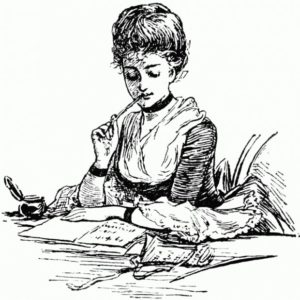I am really not a grammar Nazi. The English language is living, and rules change as generations make it their own. However, English is hard to learn precisely because there are so many exceptions to rules. Following those conventions that still exist makes it easier to write. You don’t have to stop and try to remember each particular case—you just remember or look up the rule. It’s actually simpler.
And of course, if you use good grammar and syntax, you present yourself to the reader as an educated person.
Use of Apostrophes
This is probably the most broken set of rules we see. An apostrophe has three possible purposes:
- To show ownership or possession. For example, Harvey’s book, Vickie’s painting.
- To show that a letter or group of letters is being left out. For example, don’t for do not or he’ll for he will.
- To indicate plurals for things that usually do not come in plural form. Examples might include A’s as in getting straight A’s on your report card, or “Good things come in 3’s.”
Most of the problems people have are with #1, that is, using apostrophes to show something belongs to someone.
The first difficulty comes when the singular word ends in s. (Also includes an s sound, such as Mrs. Gomez.) You actually have a choice here. Either add a “naked” apostrophe after the final s or add an ‘s at the end of the word. The important thing is that you do it the same way every time. For example, it is correct to write, I went to Chris’ house and gave him Mrs. Gomez’ money. It is also correct to say, I went to Chris’s house and gave him Mrs. Gomez’s money.
What is incorrect is to write, I went to Chris’ house and gave him Mrs. Gomez’s money. Or vice versa.
Plural nouns ending in s just have an apostrophe at the end of the word. My parents’ house sold quickly.
Plural nouns ending in something other than a s add ‘s. The children’s art was fantastic.
It’s versus Its
As an editor and educator, I’m coming to the conclusion this one is hopeless. People just get it wrong over and over. There’s a good reason for the confusion:
Its shows possession and is called a possessive pronoun, like her or his. The cat licked her tail. But if you don’t know if it’s a boy or a girl cat, you might write, The cat licked its tail.
If its followed the other apostrophe rules, it would be it’s, showing possession. The cat licked it’s tail. But that is WRONG. This may be one of the situations in which everyday usage is fixing a contradiction in the rules, and maybe in 10 or 15 years only cranky English teachers will care about its. But until then, even my grammar checker in Word picked up on “it’s tail” as wrong.
It’s WRONG because it’s is not a possessive but a contraction. You only use it’s when you are shortening it is. Any other time you use its. This is not couched in grammatical language, but it works.
If your grammar checker finds and flags it’s, then you have a pretty good idea that you need to lose the apostrophe. If you’re not using a grammar checker, think to yourself, can I substitute it is? If you can, then you need an apostrophe. If you can’t, then don’t use one.

